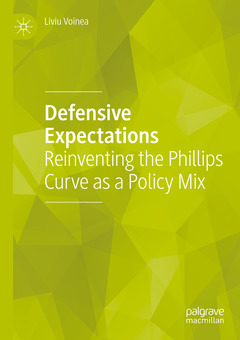Description
Defensive Expectations, 1st ed. 2021
Reinventing the Phillips Curve as a Policy Mix
Author: Voinea Liviu
Language: English
Subjects for Defensive Expectations:
Approximative price 63.29 €
In Print (Delivery period: 15 days).
Add to cartPublication date: 12-2021
196 p. · 14.8x21 cm · Paperback
Approximative price 89.66 €
In Print (Delivery period: 15 days).
Add to cartPublication date: 12-2020
196 p. · 14.8x21 cm · Hardback
Description
/li>Contents
/li>Biography
/li>Comment
/li>
This book explains why inflation remains subdued after recessions, based on three revolutionary concepts: defensive expectations, compensatory savings, and cumulative wage gap. When income falls, consumption falls, and savings rise, as people rebuild their past wealth. Households will not spend more until they fully recover what they lost. The revised Phillips Curve explains that current inflation depends on the cumulative difference between current income and past income.
This new theory is tested and validated by data for US since 1960 to date and for 35 OECD countries from 1990 to date. A number of policy implications are derived from these results. The book calls for an optimal policy mix between monetary policy and fiscal policy; it also discusses the coronavirus crisis as an extreme case of defensive expectations.
1. The Phillips Curve: what went wrong.- 2. An alternative theory of consumption.- 3. The post-crisis Phillips Curve: cumulative wage gap vs. inflation gap.- 4. Empirical evidence.- 5. Policy implications.
Presents long-run data for 35 OECD countries to formulate analysis
Works with observable variables only
Makes a fundamental change of paradigm from flow to stock
Allows for the Phillips Curve to be time-dependent




